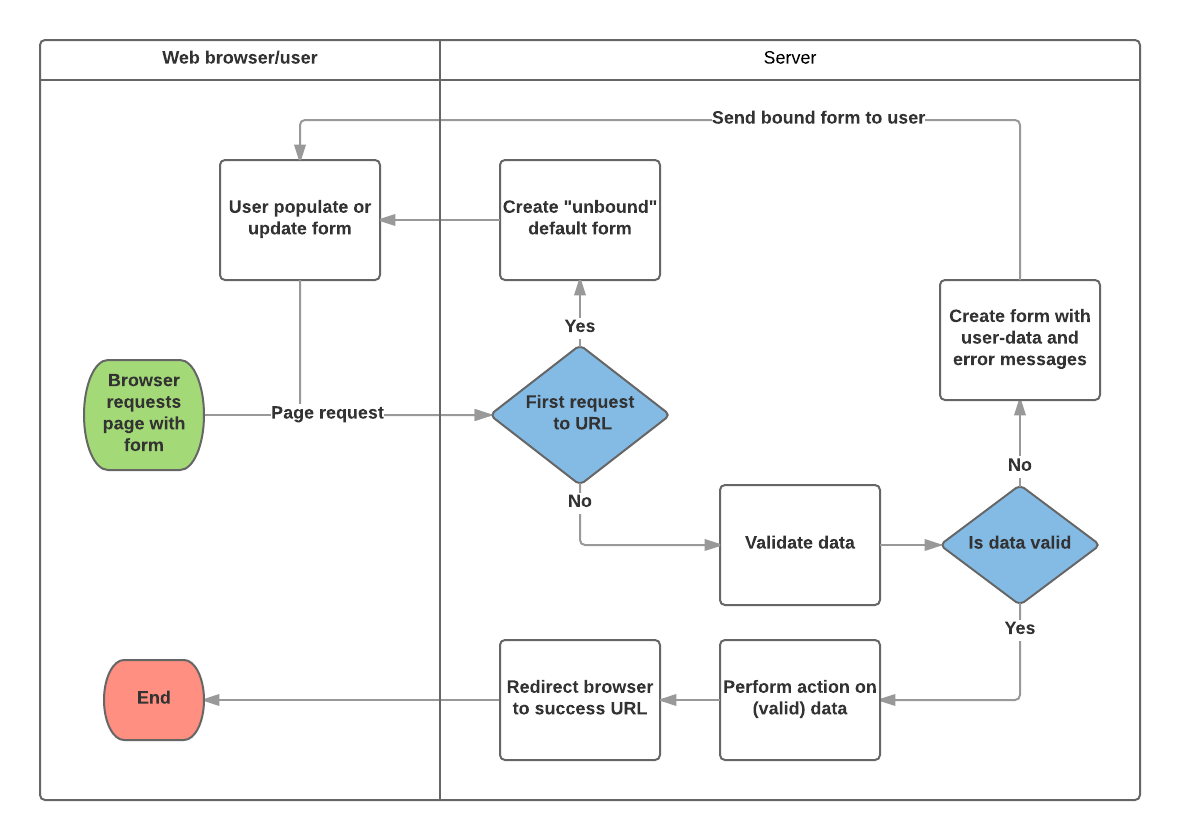Reading-notes
Working with forms
The form is defined in HTML as a collection of elements inside <form>…</form> tags, containing at least one input element of type=”submit”.
<form action="/team_name_url/" method="post">
<label for="team_name">Enter name: </label>
<input id="team_name" type="text" name="name_field" value="Default name for team.">
<input type="submit" value="OK">
</form>
action: The resource/URL where data is to be sent for processing when the form is submitted. If this is not set (or set to an empty string), then the form will be submitted back to the current page URL.
method: The HTTP method used to send the data: post or get. The POST method should always be used if the data is going to result in a change to the server’s database because this can be made more resistant to cross-site forgery request attacks.
The GET method should only be used for forms that don’t change user data (e.g. a search form). It is recommended for when you want to be able to bookmark or share the URL.
Django form handling process

the main things that Django’s form handling does are:
-
Display the default form the first time it is requested by the user.
-
Receive data from a submit request and bind it to the form.
-
Clean and validate the data
-
If any data is invalid, re-display the form, this time with any user populated values and error messages for the problem fields.
-
If all data is valid, perform required actions
-
Once all actions are complete, redirect the user to another page.
Form
The Form class is the heart of Django’s form handling system. It specifies the fields in the form, their layout, display widgets, labels, initial values, valid values, and (once validated) the error messages associated with invalid fields. The class also provides methods for rendering itself in templates using predefined formats (tables, lists, etc.) or for getting the value of any element (enabling fine-grained manual rendering).
Declaring a Form
The declaration syntax for a Form is very similar to that for declaring a Model, and shares the same field types (and some similar parameters). This makes sense because in both cases we need to ensure that each field handles the right types of data, is constrained to valid data, and has a description for display/documentation.
Validation
Django provides numerous places where you can validate your data. The easiest way to validate a single field is to override the method clean_
URL configuration
Before we create our view, let’s add a URL configuration for the renew-books page. Copy the following configuration to the bottom of locallibrary/catalog/urls.py.
View
As discussed in the Django form handling process above, the view has to render the default form when it is first called and then either re-render it with error messages if the data is invalid, or process the data and redirect to a new page if the data is valid. In order to perform these different actions, the view has to be able to know whether it is being called for the first time to render the default form, or a subsequent time to validate data.
Generic editing views
-
Views
to create, update, or delete the views you need to derive from CreateView, UpdateView, and DeleteView (respectively) and then define the associated model. -
Templates
The “create” and “update” views use the same template by default, which will be named after your model: model_name_form.html (you can change the suffix to something other than _form using the template_name_suffix field in your view, for example template_name_suffix = '_other_suffix')
- URL configurations
There is nothing particularly new here! You can see that the views are classes, and must hence be called via .as_view(), and you should be able to recognize the URL patterns in each case. We must use pk as the name for our captured primary key value, as this is the parameter name expected by the view classes.